Best laptops for architecture students of 2024
Build the future with the best laptops for architecture students
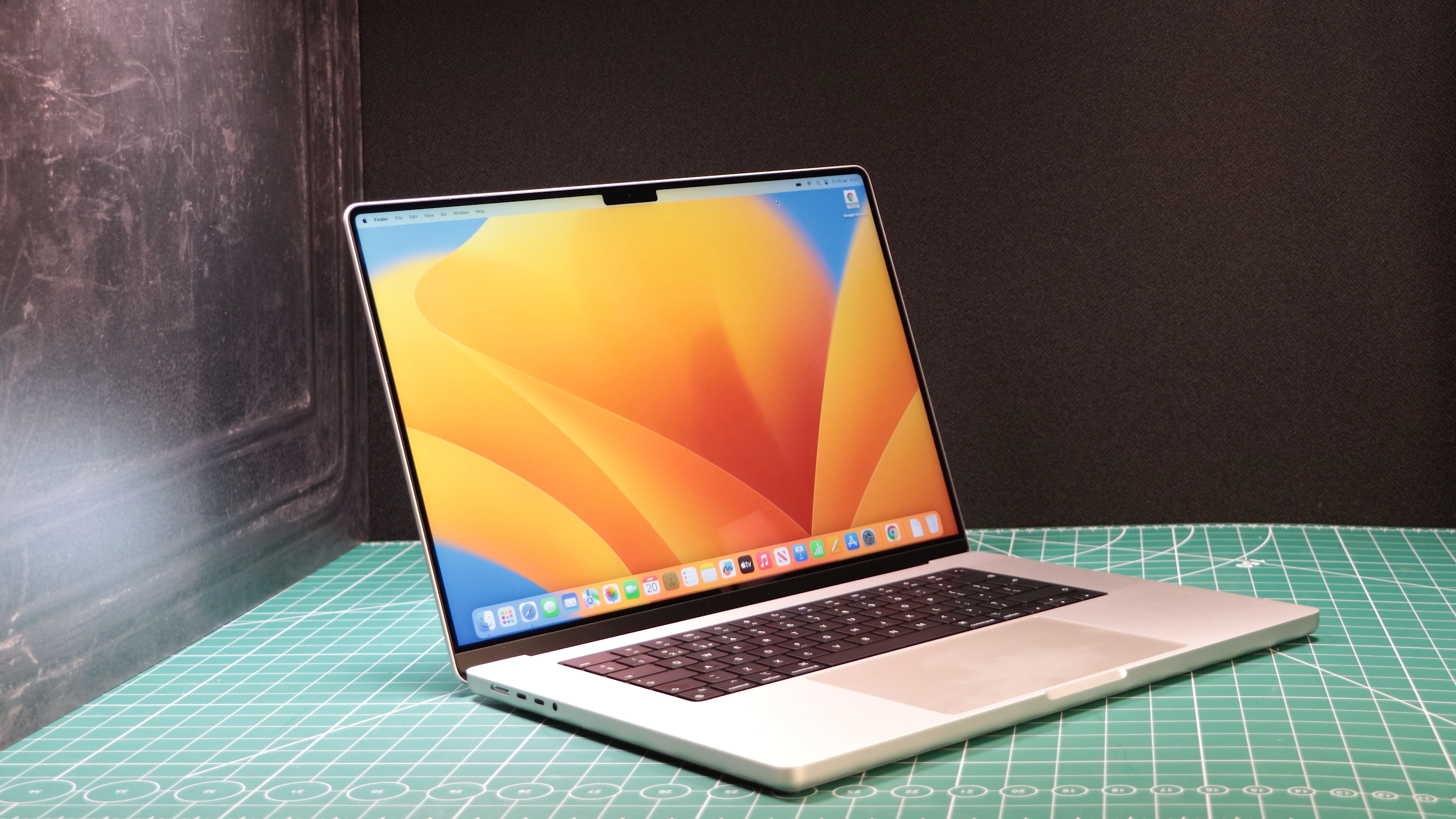
The best laptops for architecture students help you craft 2D and 3D spaced - and these are the ones we recommend for every architectural course.
Our team of expert reviewers have tested best laptops for architects and the best student laptops - so if you're just starting your course, we understand what capabilities your machine needs.
Our top pick if the Apple MacBook Pro 16in - bright and crisp, it boasts one of the best displays on any laptop, while the M2 processor will easily power through everything from report writing to computer-aided design and 3D renders.
We've rounded up our top-rated choices across Windows and Mac, comparing specs, screens, and size - and running benchmark tests to ensure each one can handle the best architecture software and the best 3D modeling software.
The quick list

Huge performance and an incredible display make light work of the most demanding architecture and design apps. You’ll get 20 hours of battery life, the keyboard is exceptional and the chassis is robust. It’s expensive, but it’ll justify the outlay with a decade of rock-solid service.
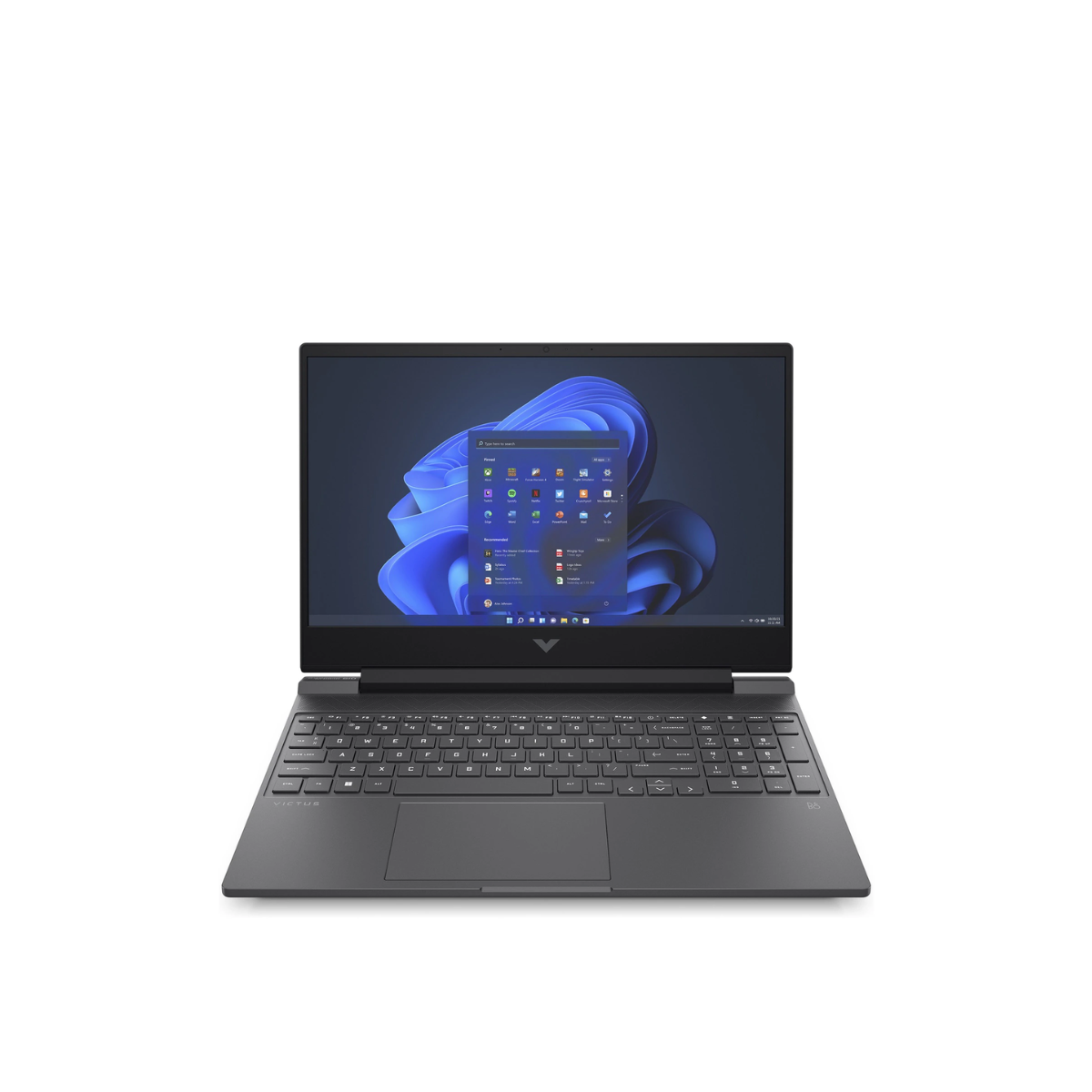
The HP marries low prices with a 1080p screen and plenty of processing and graphical power, so it’s ideal if you want a laptop that can zip through architectural software without complaint. It looks pretty mature, too – aesthetically, it’s not a typical gaming laptop. You won’t get great battery life here, but it’s affordable if performance is paramount.
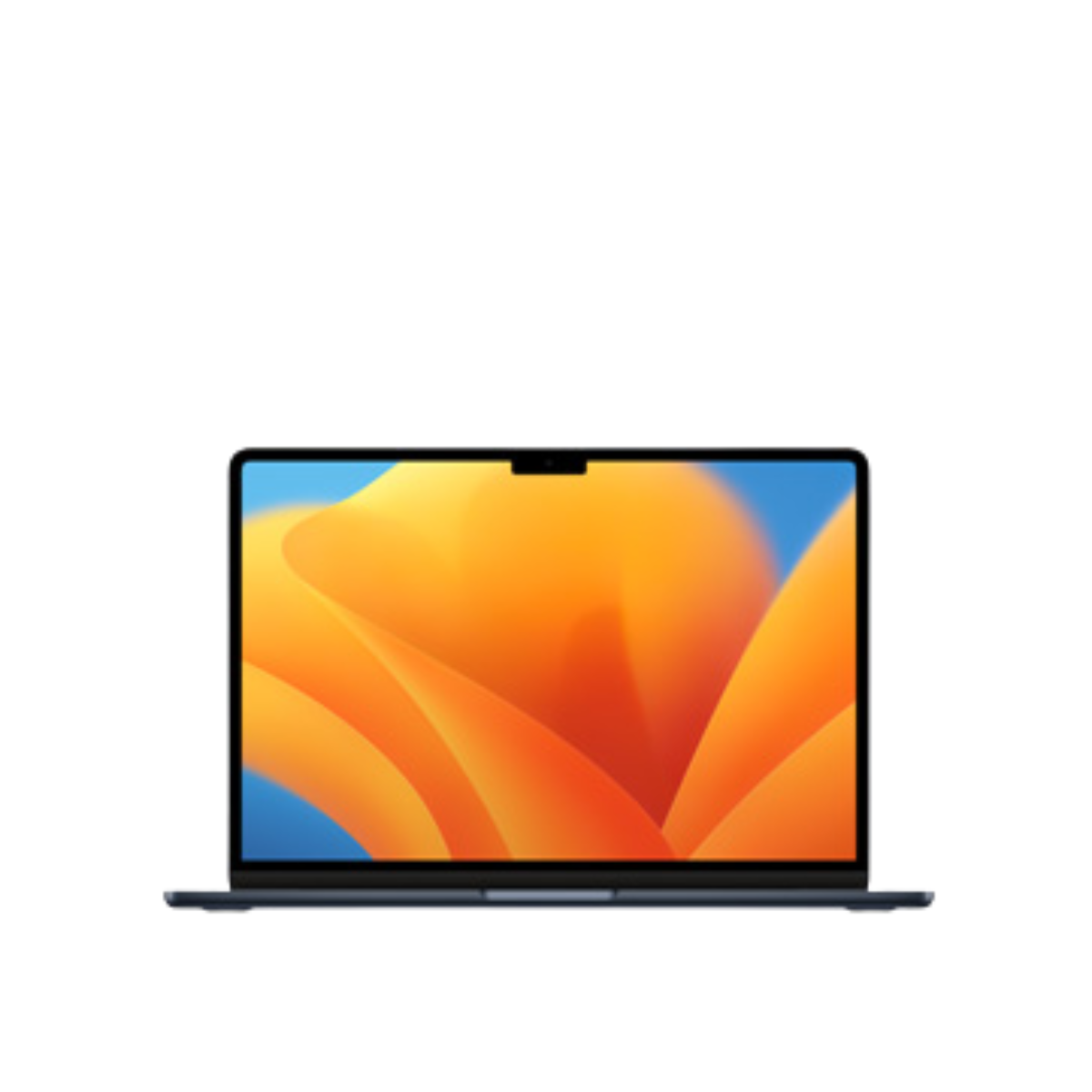
The MacBook Air remains a design marvel in both its 13.6-inch and 15.3-inch guises. Slim, light designs give way to powerful M2 processors and stunning displays – you won’t struggle to tackle architectural tasks on this notebook. Combine that with a great keyboard and all-day battery and you’ve got a winner.
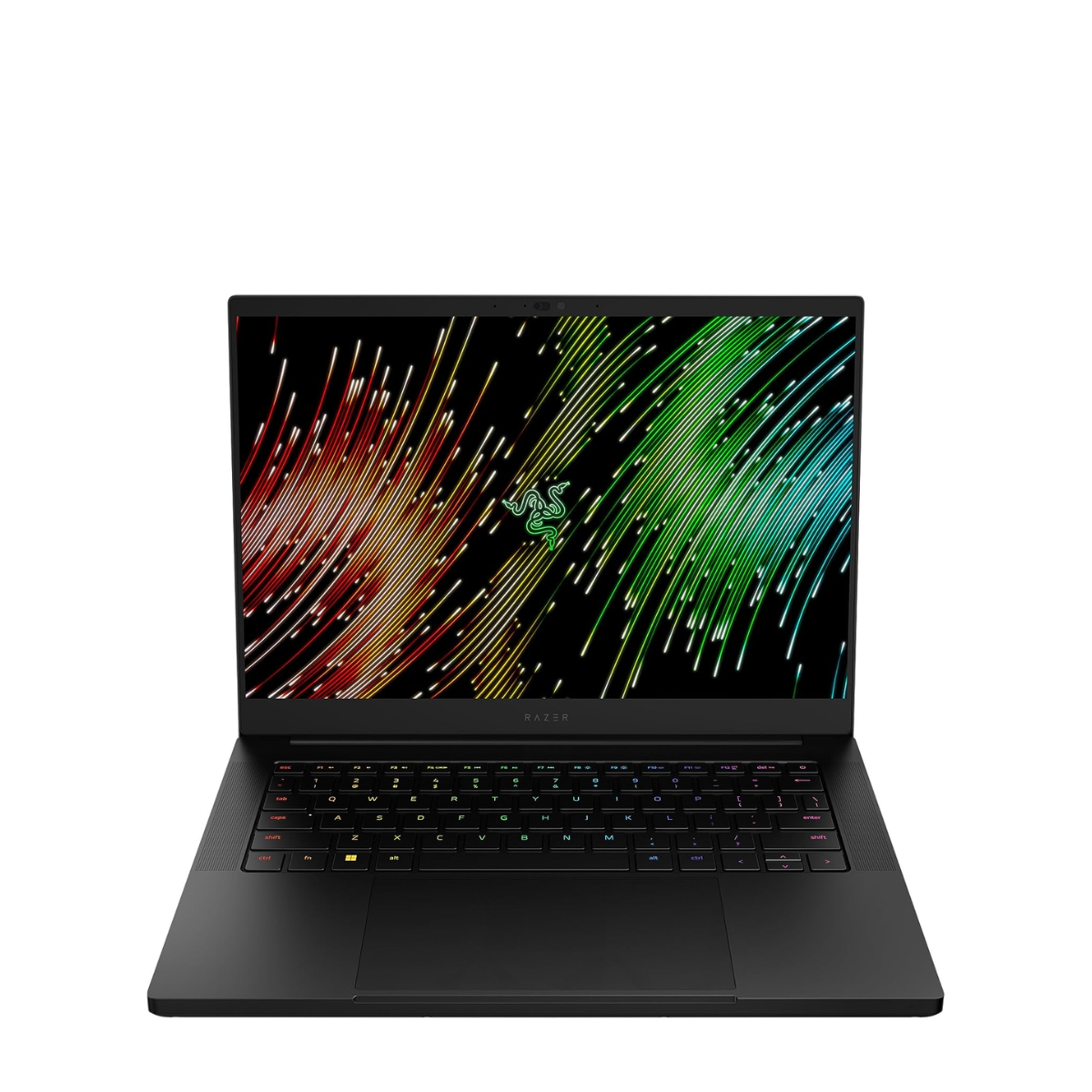
Small and perfectly formed, the latest Razer Blade 14 combines a robust, compact and good-looking chassis with top-tier AMD and Nvidia internals to tackle architectural workloads without a lot of class. A comfortable keyboard and loads of ports complete the admittedly expensive package.
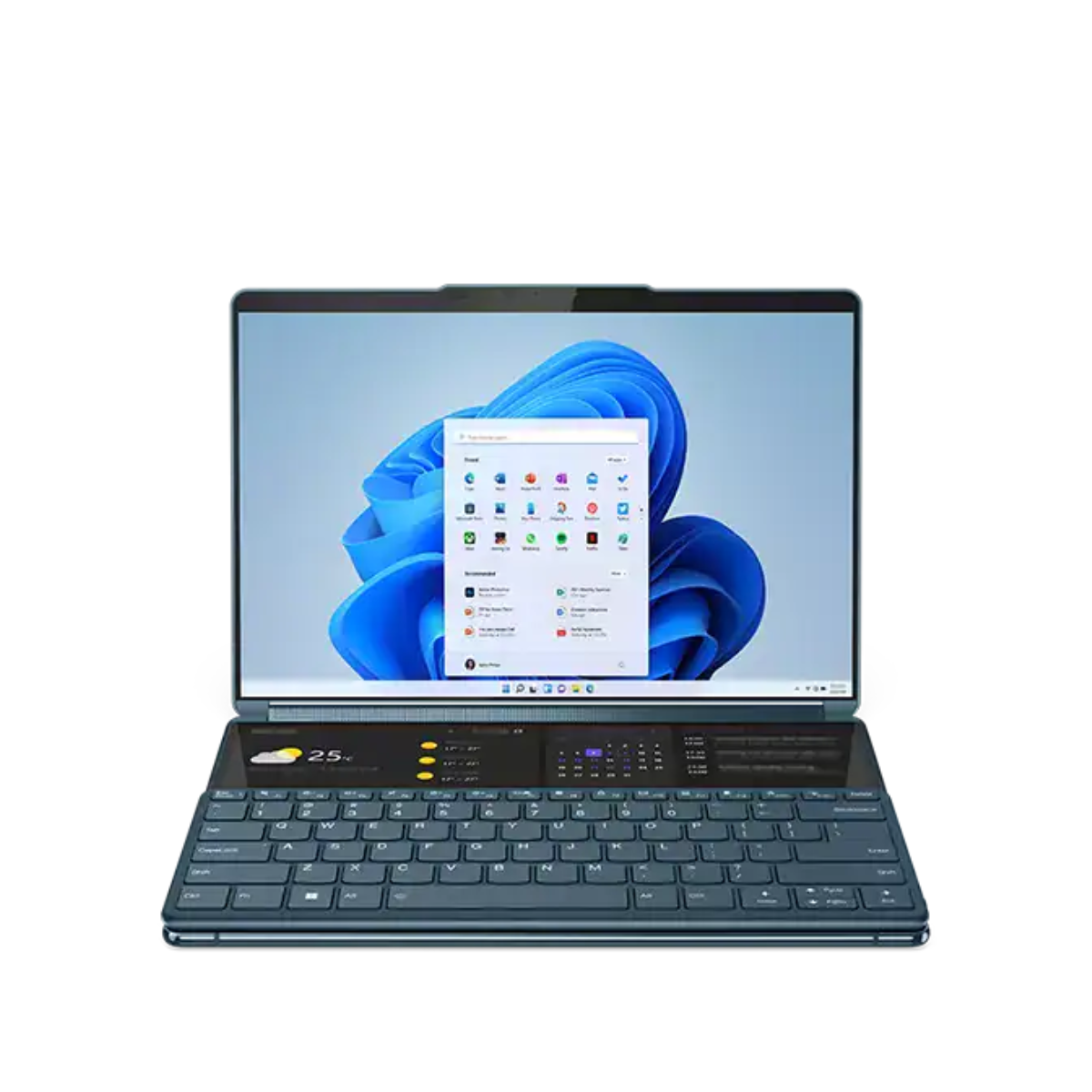
The Yoga balances its great looks with a slim convertible design and a stylus-supporting touchscreen for notes and sketches – and it’s got all-day battery life, a comfortable keyboard and an Intel 13th Gen processor.
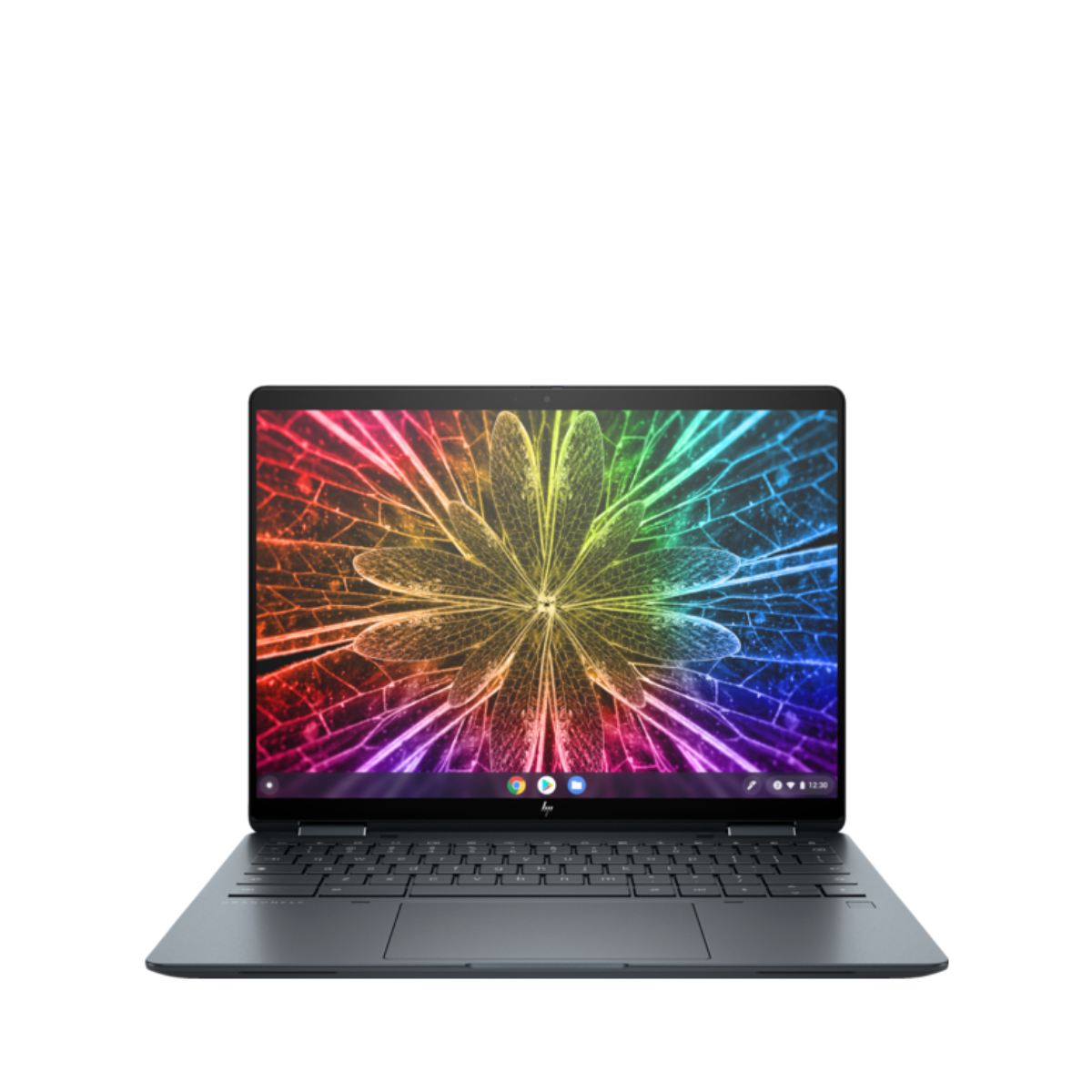
A Chromebook is rarely the best laptop for architecture students, but the HP Elite Dragonfly is the best Chromebook going right now. Rock-solid Intel Core i7 processors, tremendous screen options and extra security on pricier models make it our top ChromeOS selection.
Load the next products...
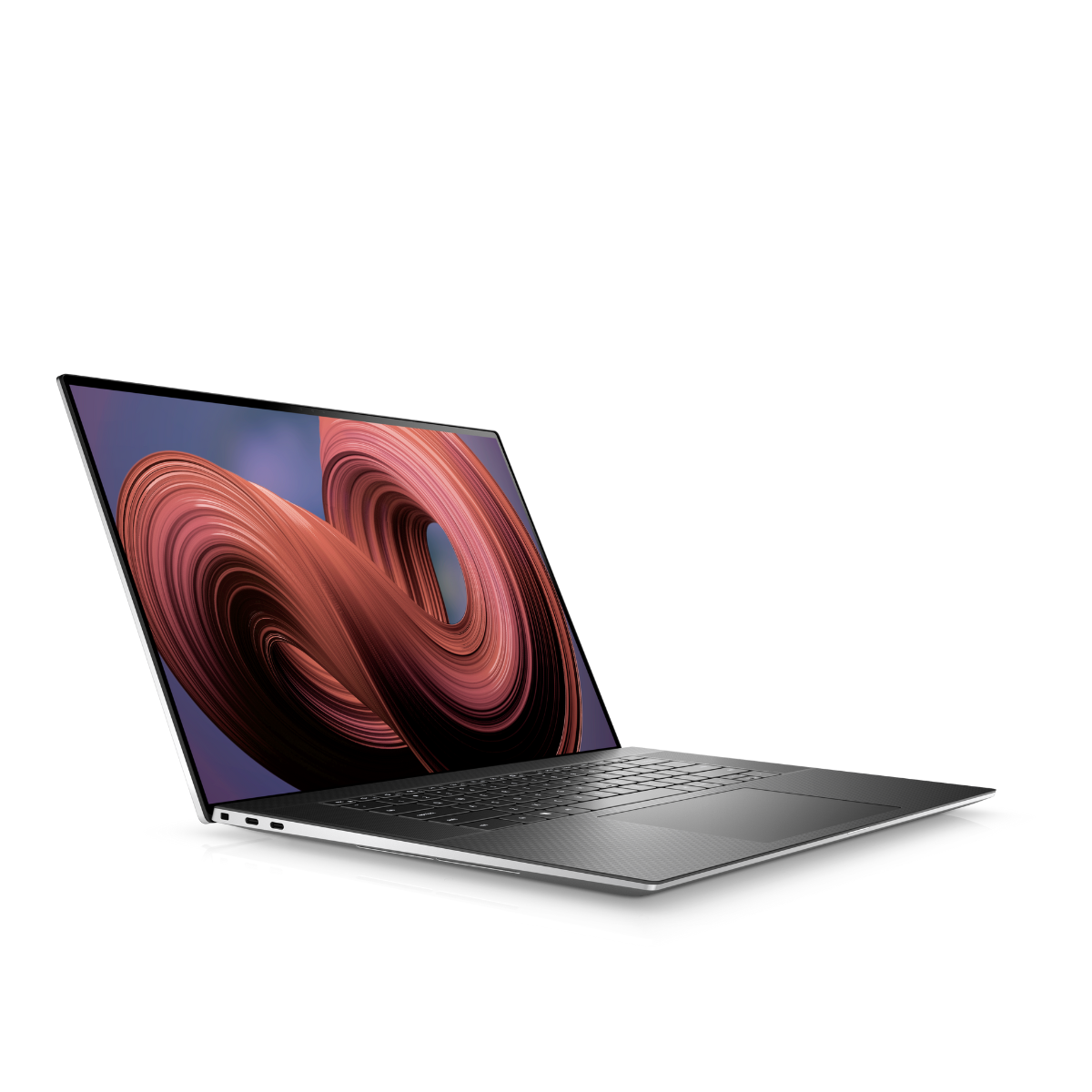
A big screen immerses like nothing else, and nothing is as good as the Dell XPS 17. A glorious display, lashings of power, a great keyboard and all-day battery life make this an ideal architectural choice.
The best laptop for architecture students of 2025 in full:
Why you can trust TechRadar
Best laptop for architecture students overall

Specifications
Reasons to buy
Reasons to avoid
Most laptop designs involve compromise, but there’s very little of that on the Apple MacBook Pro 16-inch – making it the best option for architecture students who want the top choice for their studies and future career.
On the inside, the latest M2 Pro and M2 Max processors leap ahead of the standard M2 chip and most Intel CPUs for performance, which means you’ve got all the power required for demanding architecture and design applications. Apple’s integrated graphics core also has enough power for graphical acceleration in creative apps.
Thanks to the accurate and crisp Liquid Retina XDR display, your designs will look sharp and you’ve got plenty of space to work, and the keyboard and trackpad are both exceptional.
Elsewhere, it’s impressive business as usual for Apple. The MacBook Pro 16 has Thunderbolt 4, SDXC and HDMI ports for file transfers and peripheral connections. The battery is one of the best on the market – a 20-hour lifespan is enough to handle the most demanding working day.
At 3.5 or 3.6 pounds, this mighty MacBook isn’t the lightest option around, and you’ll have to look elsewhere if you want Windows. And these notebooks are never the cheapest. But this is comfortably the best option for architecture students, and if you invest it’s the kind of notebook that could underpin your work for a decade.
Read our full Apple MacBook Pro 16 (2023) review.
Best budget laptop for architecture students
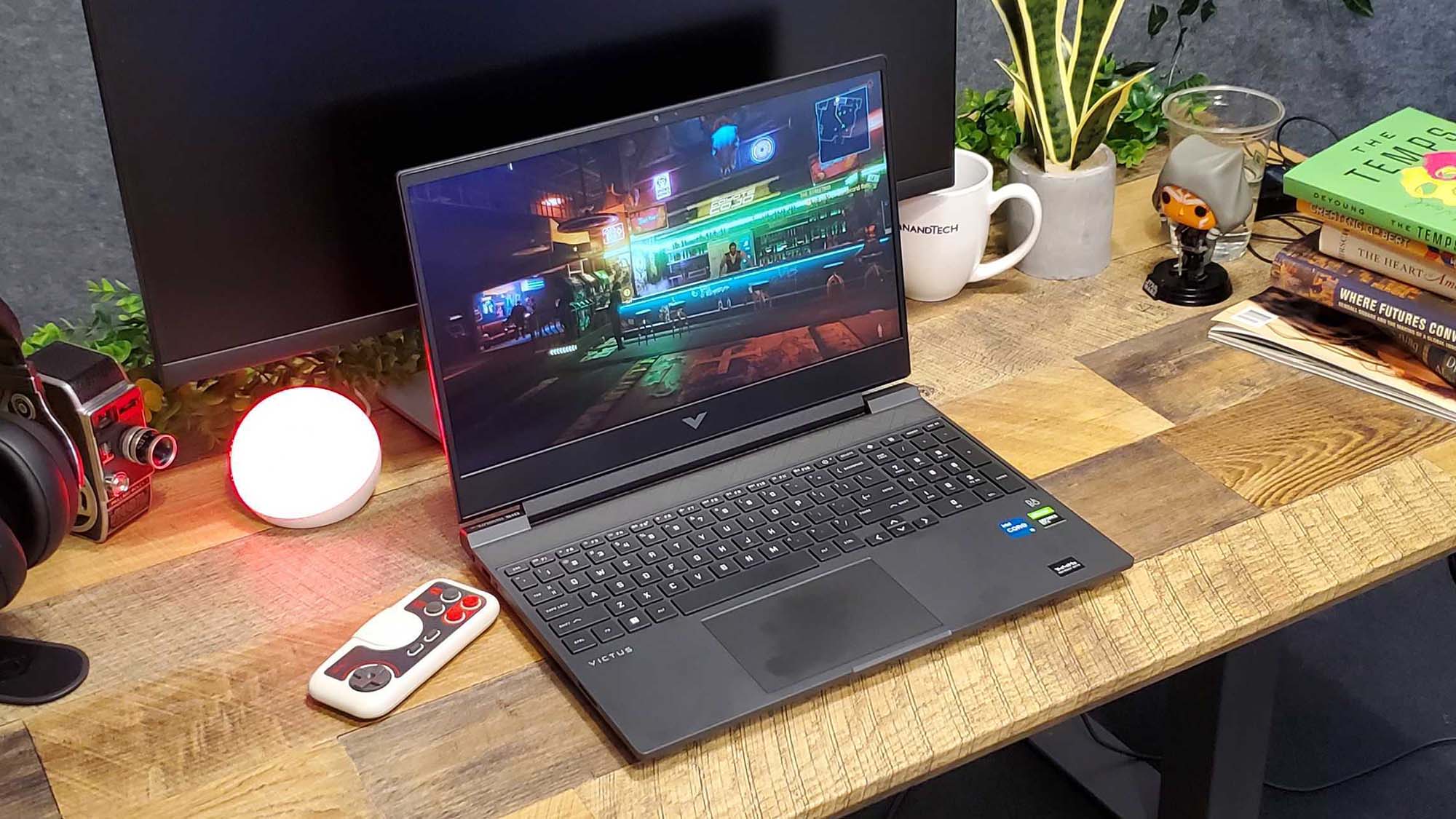
Specifications
Reasons to buy
Reasons to avoid
It might sound odd to consider a gaming laptop if you’re an architecture student, but hear us out. The Victus comes with powerful AMD and Intel processors that will handle almost any architecture and design software, and the discrete Nvidia GPU adds graphical acceleration to many of those tasks – alongside the option to play some top-quality games once the working day is done.
NVMe SSD storage and decent memory keep things moving, and the Full HD screen pairs good quality with enough pixels to handle mainstream work situations.
On the outside, HP’s rig has a surprisingly mature and modest design, so it won’t look out of place in lectures and offices, and its build quality is good enough to handle commutes and busy days. The keyboard is comfortable and spacious, the Victus never gets too loud, and the rig has a decent camera, Wi-Fi 6E and USB-C – so it’ll offer basically every feature most students require.
And if you want to do something good for the environment, this laptop is built partially from post-consumer-recycled plastic and finished with eco-friendly paint.
There’s not much on offer here in terms of battery life, but no affordable gaming notebook excels in this department. And at 5 pounds, it’s not that light either. But with bargain-basement prices and plenty of power, those are compromises worth accepting for architecture students on a budget.
Read our full HP Victus 15 review.
Best lightweight laptop for architecture students

Specifications
Reasons to buy
Reasons to avoid
The Apple M2 range of processors is a revelation – stick any of those chips inside any laptop or desktop and you’re basically guaranteed brilliant performance, no matter the form factor. That remains true in the MacBook Air, now available in 13.6-inch and 15.3-inch designs.
This notebook can’t compete with the MacBook Pro in terms of pace, but it still has ample speed for architectural apps and student software and still outpaces almost anything Intel or AMD-based at this size.
You’ll still get more than a working day of battery life from this thin notebook, and the Liquid Retina display still serves up fantastic quality – your architectural designs will look superb. The keyboard and trackpad are excellent, too, which is no surprise.
The 13.6-inch notebook weighs 2.7 pounds and the 15.3in rig weighs 3.3 pounds, so neither will weigh you down, and the robust aluminum body means you can sling the Air into a bag without concern.
This slim device doesn’t have the ports, power or longevity of the MacBook Pro, but it’s hundreds of dollars cheaper and will still handle virtually any architectural task. Its power and portability make it our favorite MacBook outside of the all-conquering Pro.
Read our full Apple MacBook Air review.
Best for gamers
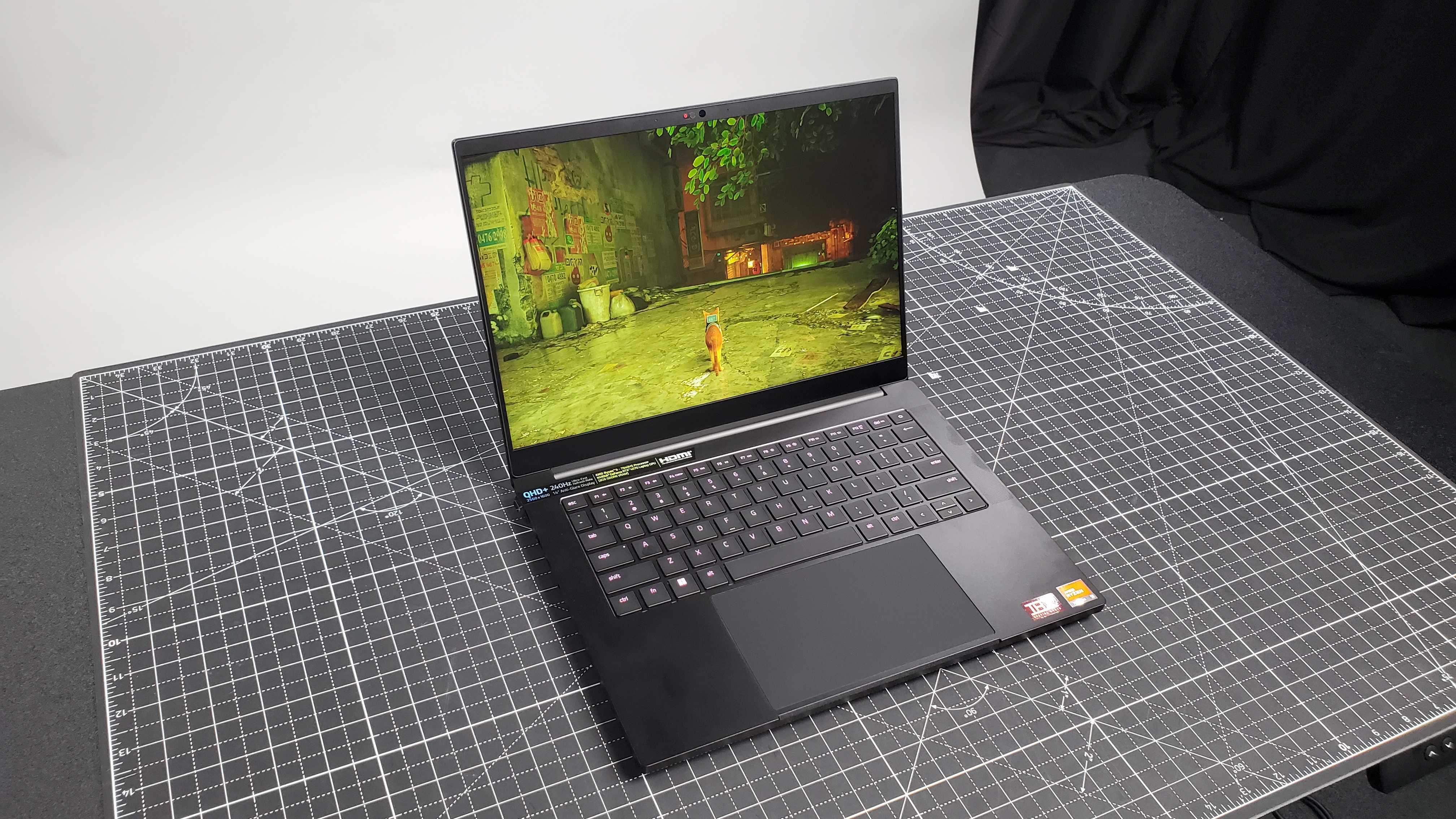
Specifications
Reasons to buy
Reasons to avoid
The maturity and quality of the Razer Blade 14 means that buying a gaming laptop for architectural student work is no longer and outrageous suggestion.
This notebook looks so sleek that it’ll get admiring glances in any office, and the high-end AMD and Nvidia internals mean that no architectural or design app will prove too much for the internals – the AMD Ryzen 9 7940HS has eight monster cores and Nvidia’s GPUs tackle accelerated creative software and the latest games.
The option to use Nvidia Studio drivers helps creative apps run smoothly, and the latest incarnation of the Blade 14 also has a 240Hz display with more quality than other 14-inch competitors.
DDR5 memory guarantees speed, the keyboard is soft, quiet and comfortable, and Wi-Fi 6E means you can connect anywhere. Unusually for a small notebook, the Blade 14 also plenty of ports, including pairs of full-size USB and USB-C connectors and an HDMI output. It also weighs just under four pounds, so it won’t prove too much of a strain on your shoulder.
It doesn’t have a card reader and you’ll only get through most of your working day without plugging in – but that’s still a decent result for any gaming notebook. Also, remember that the Razer Blade 14 is on the expensive end of the market, especially if you upgrade to 32GB of memory or better graphics.
Like the MacBook Pro, though, there’s no denying its quality. If you want a market-leading laptop for architectural work and after-lecture gaming – and don’t want anything too big – there’s nothing better.
Read our full Razer Blade 14 review.
Best 2-in-1 laptop for architecture students
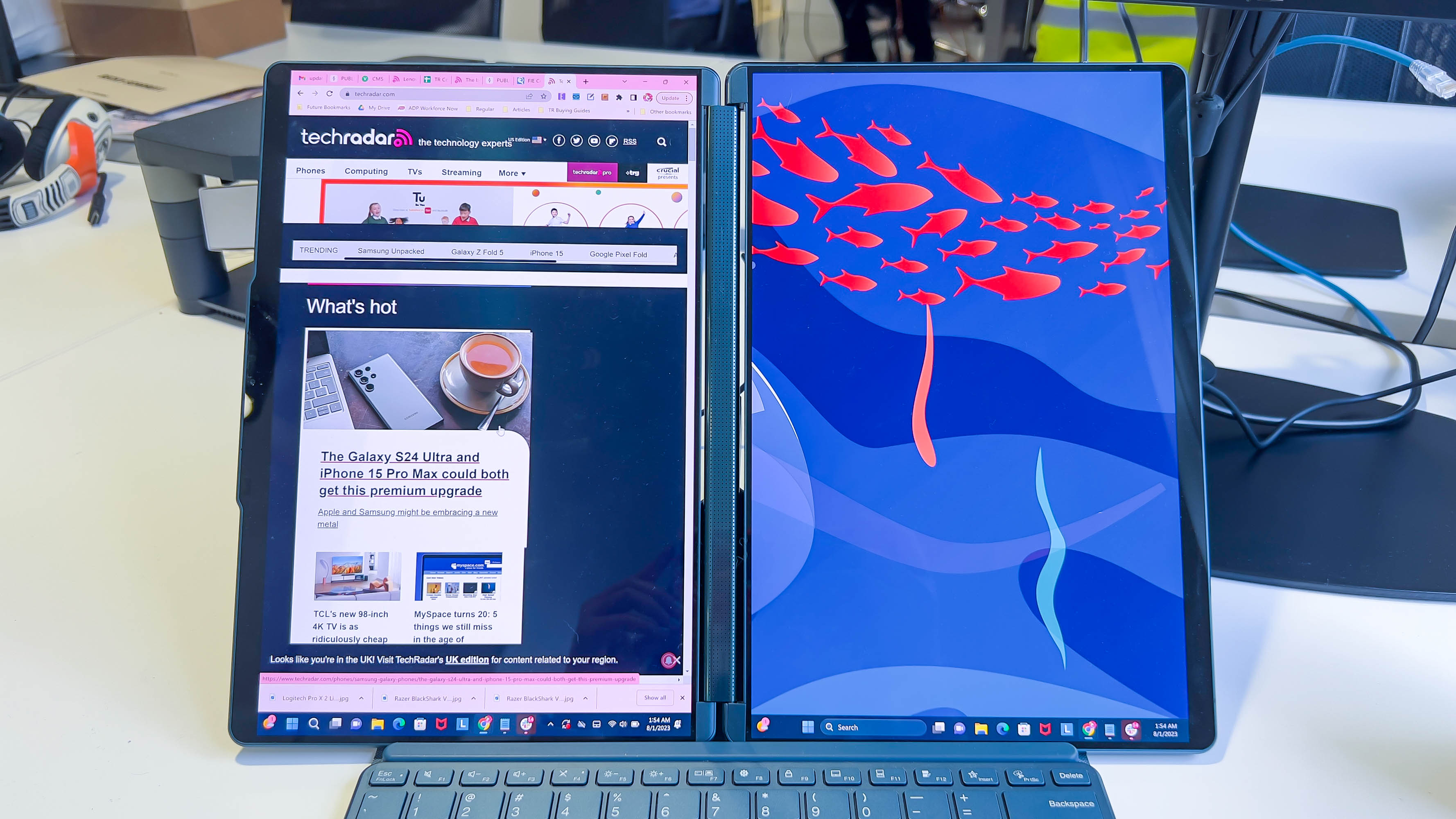
Specifications
Reasons to buy
Reasons to avoid
The Lenovo’s 2880 x 1800 OLED touchscreen comes with a stylus, and it looks phenomenal and is an amazing creative tool for note-taking and sketching. Combine that with Lenovo’s smooth convertible motion and you’ve got a portable that’s the ideal partner for creative architectural students who don’t want to be restricted by their technology.
The Lenovo looks fantastic thanks to its elegant, minimalist chassis, and the 13th Generation Intel processor sits alongside LPDDR5 memory and a 512GB SSD to deliver the speed required for mainstream architectural software.
You’ll get through a day of working with the Lenovo, the Yoga has Wi-Fi 6E connectivity and a webcam with facial recognition and a privacy shutter. Good speakers, USB-C connectivity and a tiny three-pound weight make the Yoga perfectly portable. And because it’s Lenovo, you know it’s going to have a fantastic keyboard.
A lightweight convertible with a great low-power processor, all-day battery life and a stylus-powered touchscreen is a top choice for architectural students with a creative side, so it’s our 2-in-1 choice.
Read our full Lenovo Yoga Book 9i review .
Best Chromebook for architecture students
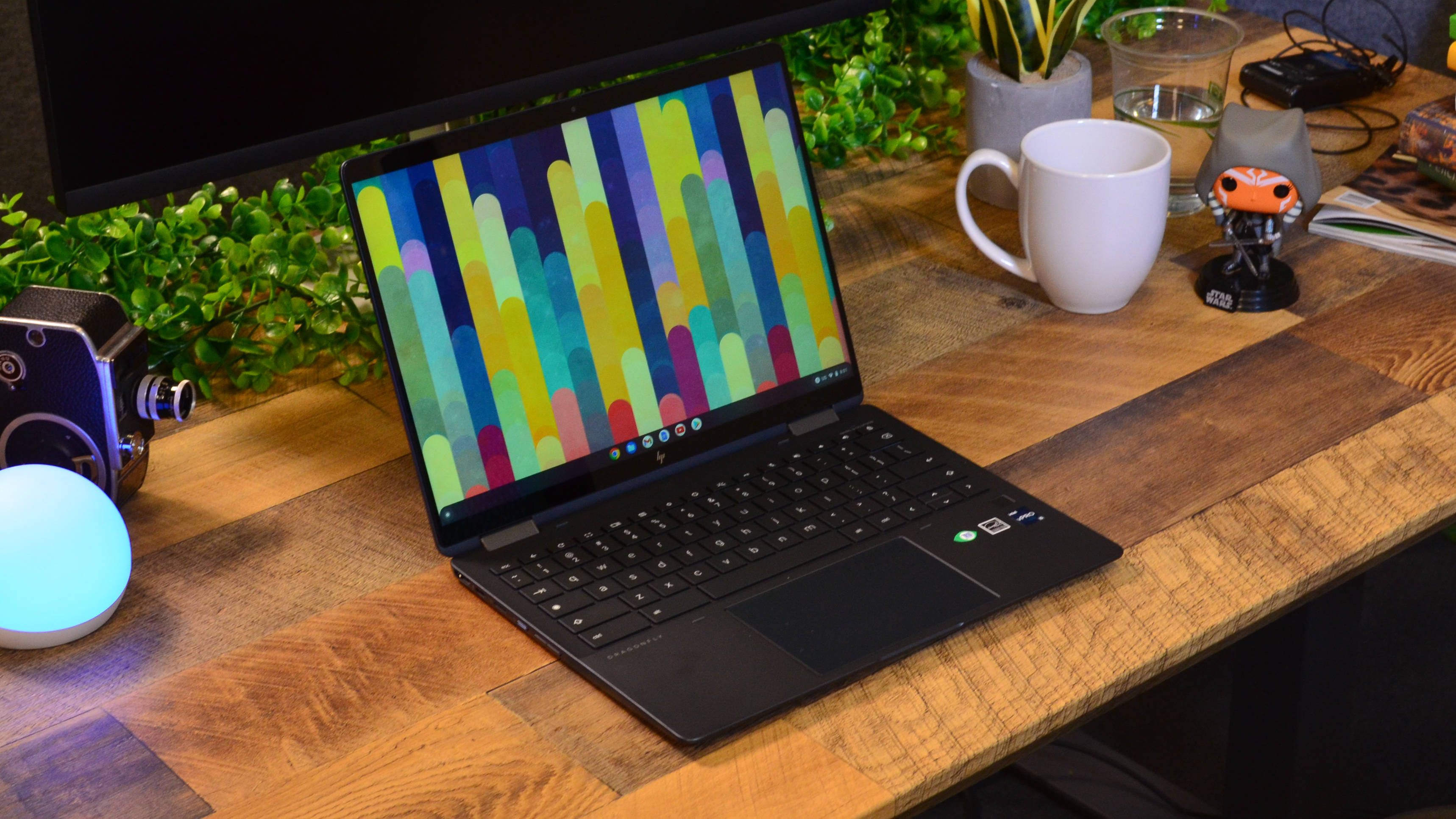
Specifications
Reasons to buy
Reasons to avoid
We’ll get this out of the way now: a Chromebook won’t usually be the best choice for an architecture student because Chrome OS doesn’t support as many apps as Windows and Mac OS and these devices don’t have particularly powerful professors.
That said, the HP Elite Dragonfly is our favorite if you do want to go down this route. The Intel Core i5 and Core i7 processors available in this rig sit at the top end for Chromebook performance. The Dragonfly has enterprise-level security features like Google’s Titan C chip and zero-touch enrolment in pricier models.
Elsewhere, the Dragonfly has all-day battery life, a fantastic screen with tremendous quality and touch capabilities and privacy features on pricier models, and the Dragonfly is available with a stylus, larger SSDs and mobile broadband.
It’s sleek, light and capable – and while it’s expensive, it’s the best Chromebook on the market. Architectural students will get limited use from Chrome OS, but if you want a Google notebook, this is what you should get.
Read our full HP Elite Dragonfly Chromebook review .
Best 17-inch laptop for architecture students
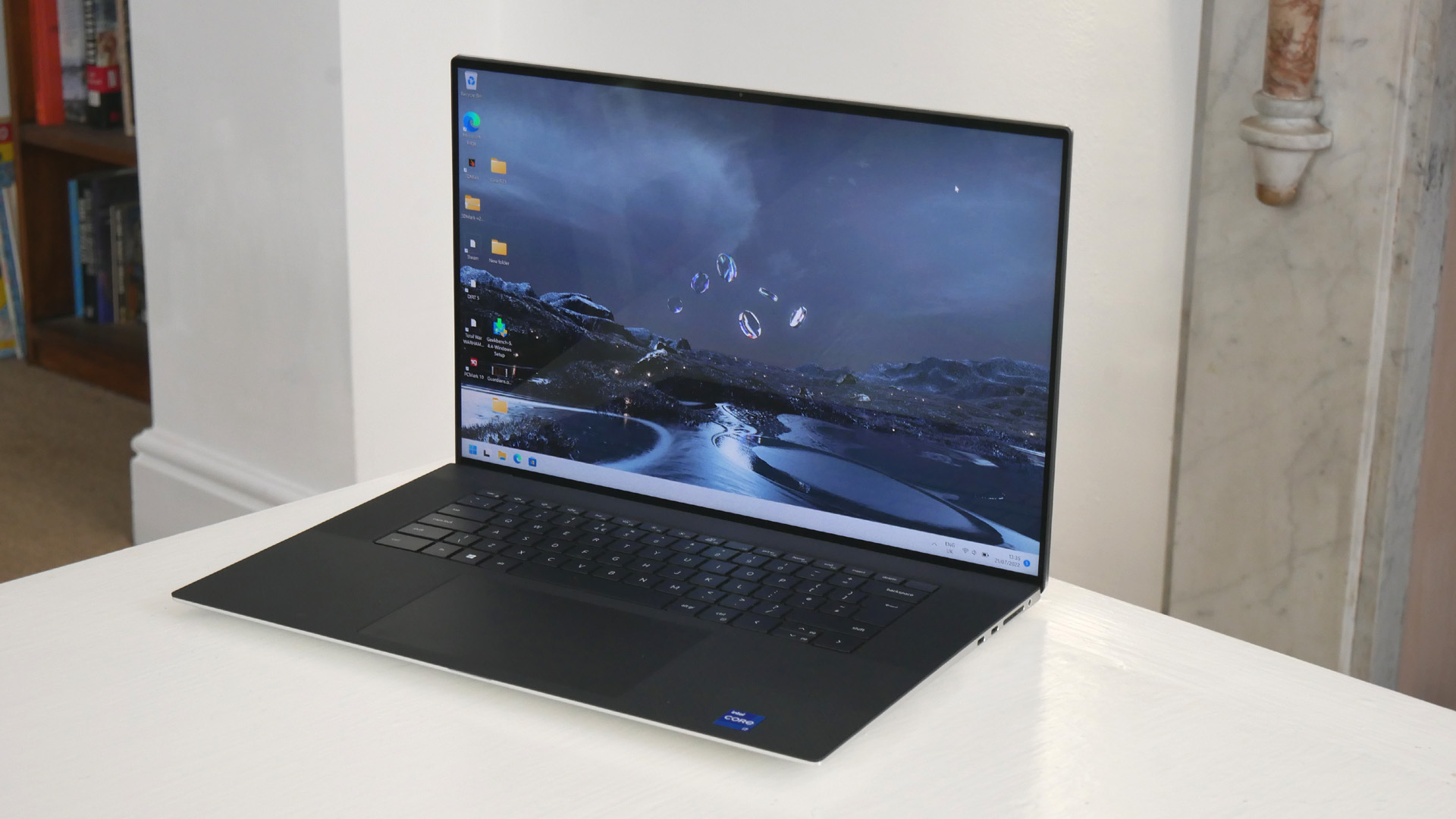
Specifications
Reasons to buy
Reasons to avoid
If you’re working on architecture and design tasks, a big screen is hugely beneficial, and there’s no better big-screen laptop than the Dell XPS 17. Its two display options deliver fantastic quality, with a 4K touch option available if you want to pay more – and either way, you’ll get the space to get really immersed in your work.
Intel 13th Gen Core i7 and i9 processors have ample power for any professional app and Nvidia’s RTX 40-series graphics cores enable both GPU acceleration and after-lecture gaming.
As usual, Dell’s devices look the part and have excellent build quality, and the keyboard is crisp, light and responsive – easily capable of handling a full day of typing. And remarkably, despite the power and size of this rig, it’s got a good enough battery to last for a full working day.
An SD card slot, four Thunderbolt ports and a USB-C connector mean good peripheral support and the XPS has Wi-Fi 6. And while its 5.37-pound weight means this laptop isn’t exactly light, it’s certainly not bad considering the sheer size of this device.
Find the best deals on Dell products with our Dell promo codes.
Read our full Dell XPS 17 review .
We've listed the best laptops for graphic design.
Best laptop for architecture students: FAQs
Are Apple laptops good for architecture students?
Apple MacBook laptops are great options for students of all stripes, including architecture students. Apple’s M2 processors deliver huge power, the keyboard and build quality are brilliant, and the battery lasts so long that you might get through two working days without a charge.
As ever, though, MacOS won’t support every app you might need, so check before you buy – and make sure your software will run on an Apple device.
Do architecture students need a powerful laptop?
Definitely. Many of the CAD and development tools required to tackle architectural tasks require lots of computing power to run smoothly.
We don’t just mean the CPU – it pays to get a laptop with a discrete Nvidia or AMD GPU and with lots of memory, too, to take advantage of GPU acceleration and ensure apps load quickly. For this reason, the best mobile workstations and high-performance gaming laptops are often a popular choice.
Laptops for architecture students running CAD applications and engineering tools always tend to require more power than everyday web-browsing, writing or even business laptops, and it pays to buy more power than you think you’ll need if you want to use your notebook for a long time.
Do the best laptops for architecture students need a big screen?
It certainly helps! It’s not the be-all and end-all when buying a notebook, especially if you want a portable device – but if you’ve got the space and bag capacity to have a 15.6in or 17in device, you’ll find it easier to become immersed in your work.
That said, getting a higher resolution rather than a bigger screen to ensure crisp, accurate visuals is arguably more important.
How to choose the best architecture laptop for you
When choosing the best laptop for an architectural course, there are a number of factors to consider.
Your first port of call should be the components –you need plenty of processor and graphics power to motor through architectural tools.
If you can, opt for a processor with at least four cores. And try to get full-power mobile chips rather than low-power versions, because that’ll ensure you get maximum processing ability from your chips.
Loads of RAM is essential to keep apps responsive – 16GB is great and 32GB is better. And make sure you’ve got at least 512GB of storage because files and architectural apps can get pretty big.
Beyond the silicon, if you’re studying or working in architecture then you could be working in the field and working days could be pretty lengthy, so a laptop with a robust chassis, rugged design features and good battery life is a must. Similarly, get a notebook with plenty of ports and Wi-Fi 6E so you can connect to networks, peripherals and external storage devices no matter your location.
Also ensure that you get an operating system that runs the architecture or 3D modeling software you need – it’s no good having a Windows laptop if your course’s top tools use Mac OS or vice versa.
How we test the best laptops for architecture students
Our team of reviewers have gone hands-on with hundreds of the best laptops - so we know exactly what to look for when putting the best laptops for architecture students to the test.
We take our review process seriously. Whether we’re testing out the best laptops for engineering students or analyzing the performance of the best laptops for architecture students, we conduct rigorous research, comparing internal specs and storage, and testing performance in a series of benchmark tests. We want to see laptops that will be able to cope with resource-intensive architectural apps.
We also assess the overall portability of the best architecture student laptops, looking for those that are lightweight (relative to internal specs and screen size) and easy to carry around campus and beyond. As part of our portability testing, we conduct a real-world battery life test so you know how long you can create designs on the go without searching for a plug point.
After checking how well the trackpad and keyboard work - making sure they’re comfortable for prolonged use in class - we assess all connectivity and port options (the more the merrier), screen size and resolution, and additional features, such as webcam quality and upgradability. Finally, we compare the best laptops for architecture students against the competition to ensure each device offers genuine value for money for each user.
Find out about our testing process in How we test laptops and desktops: our reviewing process explained.
Get in touch
- Want to find out about commercial or marketing opportunities? Click here
- Out of date info, errors, complaints or broken links? Give us a nudge
- Got a suggestion for a product or service provider? Message us directly
- You've reached the end of the page. Jump back up to the top ^
Are you a pro? Subscribe to our newsletter
Sign up to the TechRadar Pro newsletter to get all the top news, opinion, features and guidance your business needs to succeed!
Mike has worked as a technology journalist for more than a decade and has written for most of the UK’s big technology titles alongside numerous global outlets. He loves PCs, laptops and any new hardware, and covers everything from the latest business trends to high-end gaming gear.